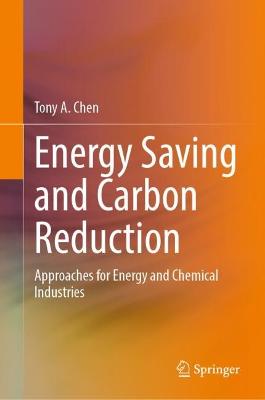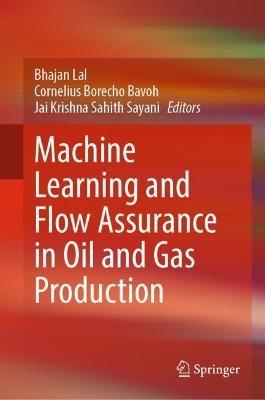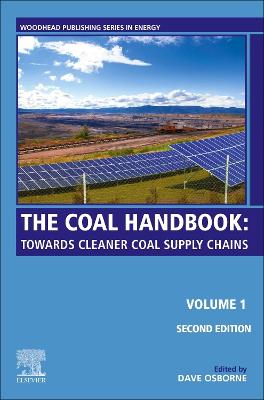Energy Saving and Carbon Reduction
 portes grátis
portes grátis
Energy Saving and Carbon Reduction
Approaches for Energy and Chemical Industries
Chen, Tony A.
Springer Verlag, Singapore
11/2022
682
Dura
Inglês
9789811952944
15 a 20 dias
1232
Descrição não disponível.
1 Thermodynamics Fundamentals 11.1 Basic Terms 11.2 Energy Form and Reference State 51.3 The First Law of Thermodynamics 91.4 The Second Law of Thermodynamics 151.5 Energy saving and GHG gas mitigation 232 Calculation of Thermophysical Energy and Exergy 252.1 Calculation of energy and exergy of process thermal effect 252.2 Calculation of Energy and Exergy of Petroleum and Its Fractions 392.3 Calculation of Energy and Exergy of Light Hydrocarbon and Its Mixture 462.4 Calculation of water vapor, water and air energy and exergy 512.5 Calculation of heat dissipation energy and exergy 523 Calculation of Mechanical Energy and Chemical Exergy 583.1 Calculation of real gas energy and exergy 583.2 Calculation of Energy in the Process of Fluid Flow 663.3 Chemical Exergy and Calculation of Fuel Exergy 704 Thermodynamic Analysis of Energy Consumption in Process 794.1 Thermodynamic analysis of heat transfer process 794.2 Thermodynamic analysis of fluid flow process [2] 844.3 Thermodynamic Analysis of Mass Transfer Process 874.4 Thermodynamic Analysis of Chemical Reaction Process 924.5 Thermodynamic analysis of the combustion process [5?6] 965 Energy utilization three-link analysis method 1005.1 Energy consumption characteristics of petrochemical industry 1005.2 Improvement of the three-link model of energy consumption analysis[3] 1015.3 The consideration of using energy utilization Three-link model 1035.4 The detail items of the improved three-Link model 1055.5 Balance relationship and evaluation index of the three-link model 1086 Equipment Energy Balance and Exergy Balance 1166.1 The content and requirements of the device energy analysis test 1166.2 Pump and Compressor Equipment 1186.3 Industrial Furnace Equipment 1276.4 Catalytic cracking regenerator 1426.5 Process energy utilization equipment 1526.6 Energy recovery and utilization equipment 1647 Energy balance and exergy balance of petrochemical plants 1747.1 Balance verification of system energy consumption data in the plant 1747.2 Plant heat loss verification and summary 1837.3 Balance of supply and consumption of steam, electricity and water 1867.4 Plant energy balance and exergy balance calculation and summary 1908 Utility/Auxiliary system and energy balance of the whole plant 2068.1 Energy balance of utility system 2078.2 Energy balance of auxiliary system 2188.3 Summary of plant-wide energy balance 2239 Energy consumption analysis and energy-saving improvement methods 2359.1 The influence of plant size and ambient temperature on energy consumption 2359.2 Analysis and estimation of the impact of loading on plant energy consumption [3] 2399.3 Assessment of energy use level and energy saving potential 2539.4 Approaches for energy-saving improvement of production plant 2629.5 Large-scale system optimization method and improvement approach 27410 Approach on CO2 mitigation and capture 28410.1 Fuel efficiency Improvement, using lower carbon fuel and renewable energy 28410.2 CO2 distribution and its properties 28610.3 CO2 Capture-solvent absorption 28810.4 CO2 capture case studies using Amine solvent 29610.5 CO2 capture case studies using DEPG physical solvent 30210.6 Flue gas CO2 capture using oxygen instead of combustion air 30710.7 CO2 capture using Cryogenic / Turbo Expander10.8 Flue gas CO2 capture using Membrane Technology10.9 CO2 compression and dehydration 30910.10 CO2 chemical utilization and storage 31311 Technical and economic evaluation of energy-saving measures 32211.1 Time value of Capital 32211.2 Static evaluation method 32711.3 Dynamic evaluation method 33111.4 Estimation of economic benefits of energy-saving measures 33912 Optimization on pipeline and equipment 34712.1 Process rate and exergy loss 34712.2 Economical insulation thickness of hot fluid pipeline 35212.3 Economical pipe diameter and insulation thickness for fluid transportation [11] 35612.4 Optimization of heat exchange equipment ?6, 17? 36412.5 Economical thermal efficiency of heating furnace 37013 Pinch energy-saving technology and its application 37413.1 The concept of pinch point and its determination 37413.2 Pre-estimate the heat exchange network area and the optimal ?Tmin 38113.3 Energy target determination 38913.4 Pinch design method of heat exchange network 39213.5 Reasonable placement of the heat engine (pump) of the total energy system [5, 14] 40013.6 The effect of cross heat transfer on heat exchange network area and energy 40313.7 Energy saving principle of pinch technology 41413.8 Pinch analysis examples using Aspen Energy Analyzer 42114 Key Energy-saving technologies in petrochemical process 43314.1 Pump speed control technology 43314.2 Energy saving with Gas turbine combined heat and power supply 43714.3 FCCU regenerating gas CO combustion outside of regenerator 44114.4 FCCU flue gas turbine energy-saving process optimization14.5 Low temperature heat recovery and utilization technology
Este título pertence ao(s) assunto(s) indicados(s). Para ver outros títulos clique no assunto desejado.
Energy Balance;Exergy Balance;Energy Analysis;Heat Integration;CO2 Capture;Greenhouse Gas;CO2 Utilization;Exergy Calculation;Energy Optimazation;Heat Loss;Heat Dissipation;Cryogenic CO2 Capture;Turbo Expander CO2 Capture;CO2 Capture Case Study;Gas Turbine;Flue Gas Turbine
1 Thermodynamics Fundamentals 11.1 Basic Terms 11.2 Energy Form and Reference State 51.3 The First Law of Thermodynamics 91.4 The Second Law of Thermodynamics 151.5 Energy saving and GHG gas mitigation 232 Calculation of Thermophysical Energy and Exergy 252.1 Calculation of energy and exergy of process thermal effect 252.2 Calculation of Energy and Exergy of Petroleum and Its Fractions 392.3 Calculation of Energy and Exergy of Light Hydrocarbon and Its Mixture 462.4 Calculation of water vapor, water and air energy and exergy 512.5 Calculation of heat dissipation energy and exergy 523 Calculation of Mechanical Energy and Chemical Exergy 583.1 Calculation of real gas energy and exergy 583.2 Calculation of Energy in the Process of Fluid Flow 663.3 Chemical Exergy and Calculation of Fuel Exergy 704 Thermodynamic Analysis of Energy Consumption in Process 794.1 Thermodynamic analysis of heat transfer process 794.2 Thermodynamic analysis of fluid flow process [2] 844.3 Thermodynamic Analysis of Mass Transfer Process 874.4 Thermodynamic Analysis of Chemical Reaction Process 924.5 Thermodynamic analysis of the combustion process [5?6] 965 Energy utilization three-link analysis method 1005.1 Energy consumption characteristics of petrochemical industry 1005.2 Improvement of the three-link model of energy consumption analysis[3] 1015.3 The consideration of using energy utilization Three-link model 1035.4 The detail items of the improved three-Link model 1055.5 Balance relationship and evaluation index of the three-link model 1086 Equipment Energy Balance and Exergy Balance 1166.1 The content and requirements of the device energy analysis test 1166.2 Pump and Compressor Equipment 1186.3 Industrial Furnace Equipment 1276.4 Catalytic cracking regenerator 1426.5 Process energy utilization equipment 1526.6 Energy recovery and utilization equipment 1647 Energy balance and exergy balance of petrochemical plants 1747.1 Balance verification of system energy consumption data in the plant 1747.2 Plant heat loss verification and summary 1837.3 Balance of supply and consumption of steam, electricity and water 1867.4 Plant energy balance and exergy balance calculation and summary 1908 Utility/Auxiliary system and energy balance of the whole plant 2068.1 Energy balance of utility system 2078.2 Energy balance of auxiliary system 2188.3 Summary of plant-wide energy balance 2239 Energy consumption analysis and energy-saving improvement methods 2359.1 The influence of plant size and ambient temperature on energy consumption 2359.2 Analysis and estimation of the impact of loading on plant energy consumption [3] 2399.3 Assessment of energy use level and energy saving potential 2539.4 Approaches for energy-saving improvement of production plant 2629.5 Large-scale system optimization method and improvement approach 27410 Approach on CO2 mitigation and capture 28410.1 Fuel efficiency Improvement, using lower carbon fuel and renewable energy 28410.2 CO2 distribution and its properties 28610.3 CO2 Capture-solvent absorption 28810.4 CO2 capture case studies using Amine solvent 29610.5 CO2 capture case studies using DEPG physical solvent 30210.6 Flue gas CO2 capture using oxygen instead of combustion air 30710.7 CO2 capture using Cryogenic / Turbo Expander10.8 Flue gas CO2 capture using Membrane Technology10.9 CO2 compression and dehydration 30910.10 CO2 chemical utilization and storage 31311 Technical and economic evaluation of energy-saving measures 32211.1 Time value of Capital 32211.2 Static evaluation method 32711.3 Dynamic evaluation method 33111.4 Estimation of economic benefits of energy-saving measures 33912 Optimization on pipeline and equipment 34712.1 Process rate and exergy loss 34712.2 Economical insulation thickness of hot fluid pipeline 35212.3 Economical pipe diameter and insulation thickness for fluid transportation [11] 35612.4 Optimization of heat exchange equipment ?6, 17? 36412.5 Economical thermal efficiency of heating furnace 37013 Pinch energy-saving technology and its application 37413.1 The concept of pinch point and its determination 37413.2 Pre-estimate the heat exchange network area and the optimal ?Tmin 38113.3 Energy target determination 38913.4 Pinch design method of heat exchange network 39213.5 Reasonable placement of the heat engine (pump) of the total energy system [5, 14] 40013.6 The effect of cross heat transfer on heat exchange network area and energy 40313.7 Energy saving principle of pinch technology 41413.8 Pinch analysis examples using Aspen Energy Analyzer 42114 Key Energy-saving technologies in petrochemical process 43314.1 Pump speed control technology 43314.2 Energy saving with Gas turbine combined heat and power supply 43714.3 FCCU regenerating gas CO combustion outside of regenerator 44114.4 FCCU flue gas turbine energy-saving process optimization14.5 Low temperature heat recovery and utilization technology
Este título pertence ao(s) assunto(s) indicados(s). Para ver outros títulos clique no assunto desejado.







